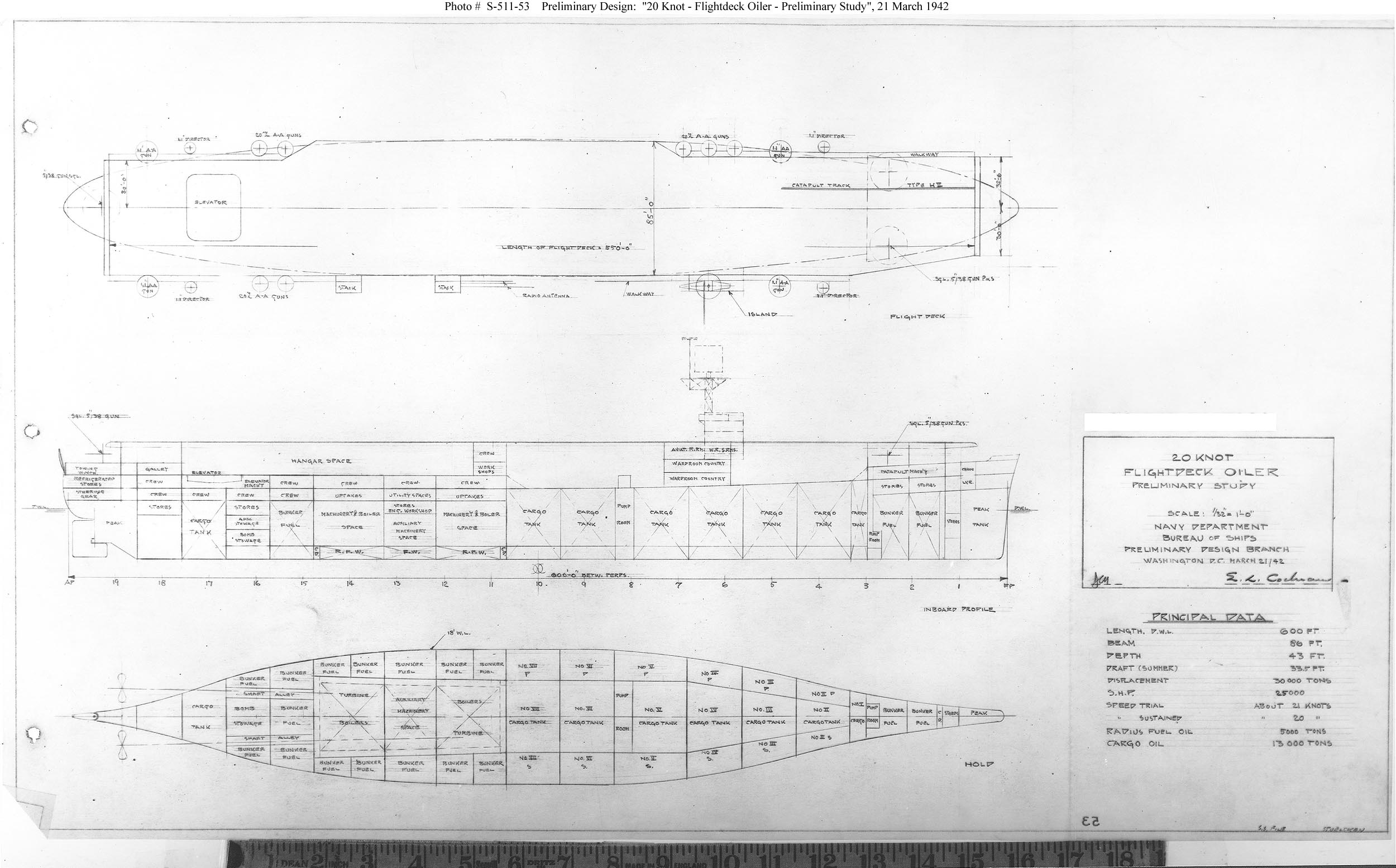The Merchant Aircraft Carriers were modified bulk grain carriers or tankers built with flight decks and small island structures. Minimal aircraft handling and accommodation facilities were available. The bulk nature of the cargoes did not need deck mounted cargo-handling gear used for general cargoes. The MAC-ships were manned by a Merchant Navy crew, under merchant colours, the Royal Navy provided the air department and the guns were manned by DEMS soldiers. They carried their regular cargo in addition to operating aircraft. Tanker MAC-ships were able to carry about 80 percent of their original cargo, the remaining space being taken for Avgas stowage to Admiralty safety standards. Grain carrier MAC-ships suffered a reduction of about 3,000 tons (or 30 per cent) of the original cargo of grain. Their Fairey Swordfish aircraft carried out anti-submarine patrols around the convoy.[2][3]
The scale of the conversion was small, hence it could be completed in a short time; five months has been quoted as being typical.[1]
The fuel piping arrangements in a tanker made it impossible to build a hangar under the flight deck, so tanker conversions were limited to embarking three Fairey Swordfish which had to be kept on deck. Collapsible deck-edge wind breaks were fitted on the flight deck aft to provide some protection for parked aircraft. The grain carriers had a small hangar aft with a single lift which allowed the carriage of four Swordfish. Flight decks were around 460 feet (140 m) long on the tankers and between 413 and 424 feet for the grain ships, width was 62 feet (19 m) in all cases. All the MAC-ships were fitted with four arrester wires. The permanent deck park of the tanker MAC-ships required a barrier for aircraft recovery. Aircrew accommodation was minimal and ammunition and fuel stores were neither armoured nor partitioned.[3]
Many of the ships were given names with the prefix "Mac-", in a reference to their designation as MACs; the "Empire" prefix was used on ships built by the Ministry of War Transport to distinguish them from pre-war privately owned ships. Since these ships were owned by the Government and only on loan to the shipping companies it was easier to take them out of service for conversion.


